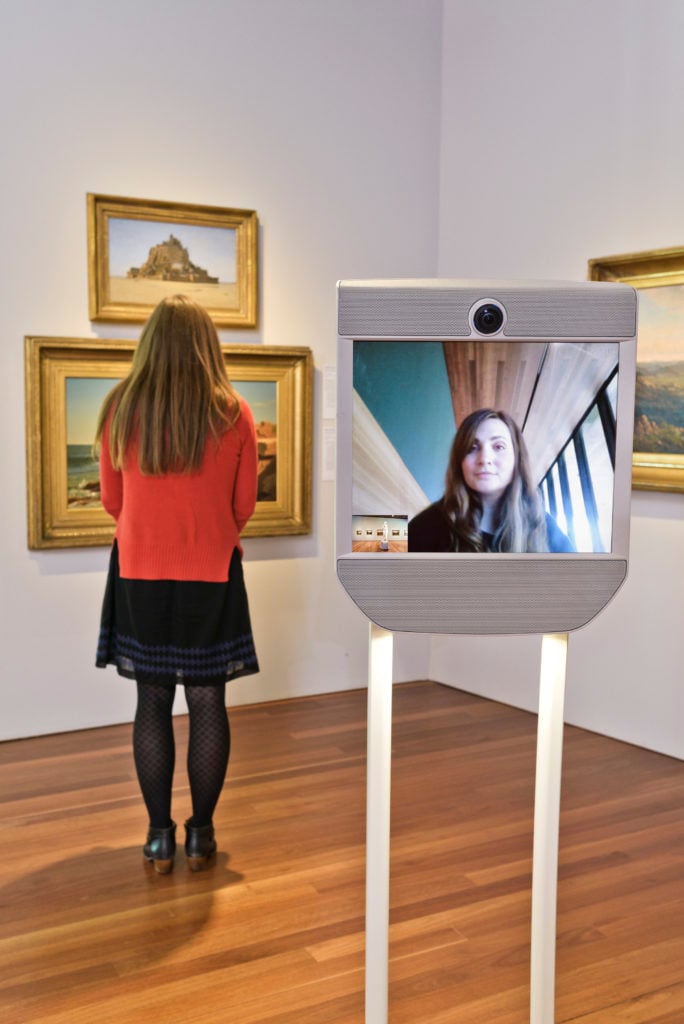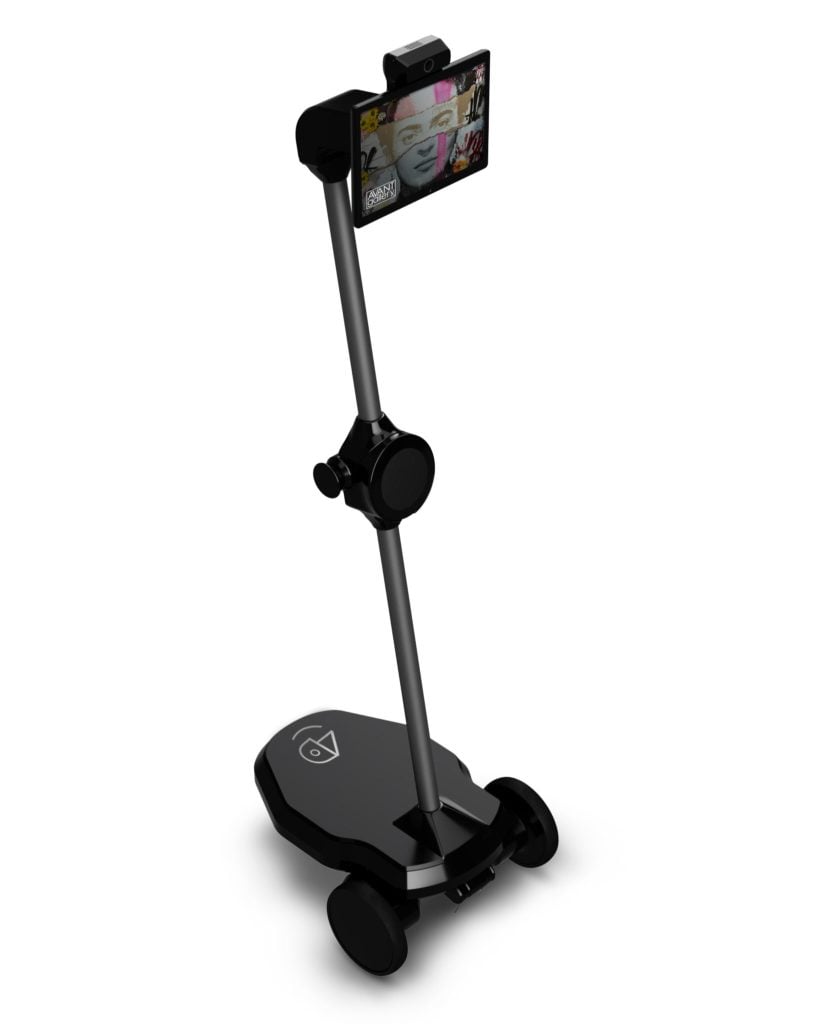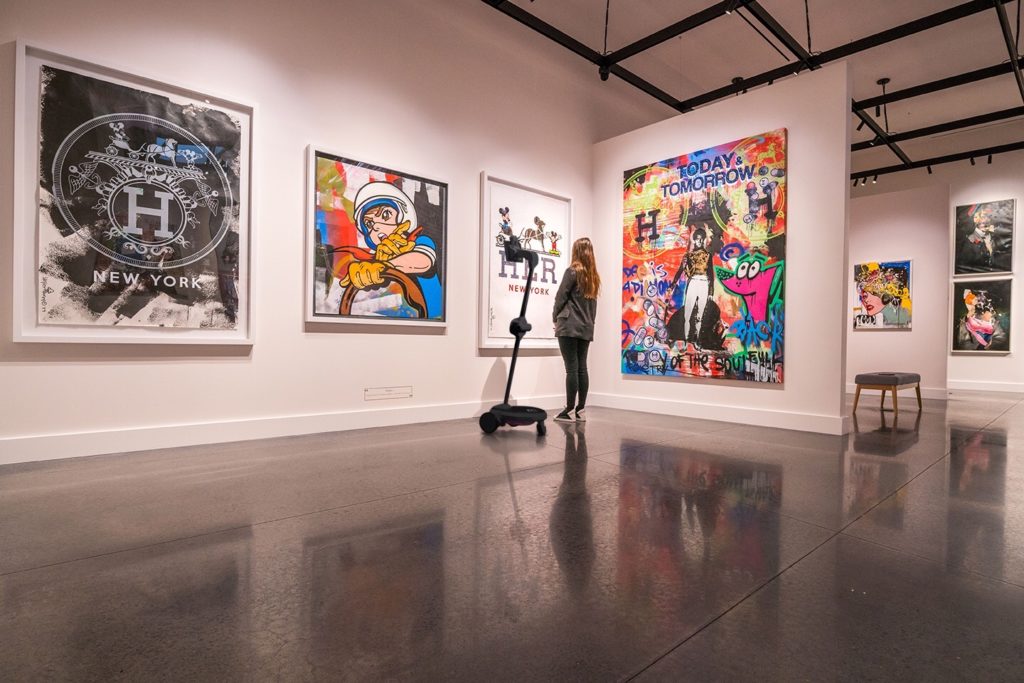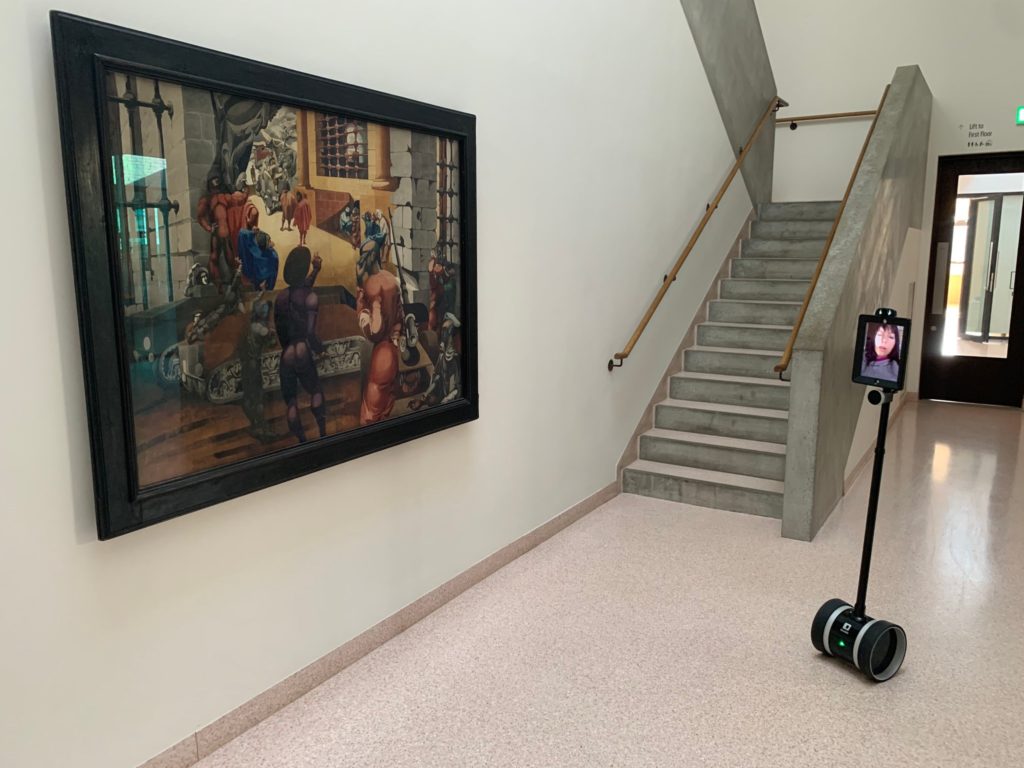Art World
R2D2, Museum Docent? Some Art Spaces Are Now Using Robots to Give Locked-Down Visitors Virtual Tours of Their Exhibitions
Visitors are clamoring to sign up for the robot-led walkthroughs.

Visitors are clamoring to sign up for the robot-led walkthroughs.

Sarah Cascone

As the art world adjusts to the new normal of virtual exhibitions and online viewing rooms, a number of galleries have adopted another tool to help audiences enjoy art from the safety of their homes: robots.
Telepresence robots, to be precise, allow viewers to remotely guide the machine through an exhibition while appearing on video chat.
When the English gallery Hastings Contemporary began offering robot tours on Monday, they became an instant sensation. Self-isolating art lovers inundated staff with hundreds of booking requests and Hastings has since posted a notice on its website that says it is “overwhelmed and delighted at the interest.” It is now offering priority for “those who are most vulnerable and at risk due to isolation.”
Meanwhile, Avant Gallery, which has spaces in New York, Miami, and Dubai, saw immediate results when it began piloting robot visits for collectors last week. “Using this technology, we’ve just sold a sculpture and a commission for $80,000 by Will Kurtz,” Dmitry Prut, the gallery’s president and founder, told Artnet News in an email. “During these challenging times, we’re able to connect with our clients in a whole new way and bring them back inside our establishment.”

The Ohmni® Robot, giving telepresence tours of Avant Gallery. Photo courtesy of Avant Gallery.
Both galleries’ robots are equipped with video screens that allow the at-home user to appear on camera while staff members are physically present during the experience.
“There’s real pleasure through the empowerment of driving and socializing via the robot,” Hastings director Liz Gilmore told Artnet News in an email. “What’s been so lovely is welcoming people to the gallery, from Dubai to Melbourne, and also a wheelchair user just down the road in our town Hastings.”
The appeal of telepresence robots is twofold: They offer a much-needed dose of culture, connection, and escape from self-isolation, and then there’s the sheer novelty of it.
“It’s not about looking at art,” Tommaso Lanza, creative director of the creative technology studio the Workers, told Artnet News. “If you really want to see a famous painting, it’s probably easier to go on Wikipedia.”
Still, the new technology delivers a reasonable facsimile to the art. “It’s good quality for a small camera, and some of the works we have on show do appear in amazing detail, with faithful color reproduction. And there’s the option to zoom in and get really close,” Gilmore said.

The Ohmni® Robot, giving telepresence tours of Avant Gallery. Photo courtesy of Avant Gallery.
At Avant, rolling out the robots as a business tool is part of its new “4D” program that aims to incorporate new technologies into the gallery’s operations. “The whole tech space is obviously even more relevant now than anyone could’ve ever imagined,” said Prut. “Avant is offering this service to its existing clientele who show serious interest in acquiring, beyond seeing JPEGs and viewing rooms, and want to actually ‘visit’ the gallery’s physical location via mobile embodiment.”
The gallery is using an Ohmni Robot, developed by Silicon Valley tech company Ohmni Labs in 2017. The technology includes a 13-megabyte camera on a tilting neck that swivels, offering the operator a nearly 360-degree view of the environment. The gallery sends clients with appointments a link and password to log in and take control of the robot, which serves as the collector’s avatar—or “Avantar,” as they’ve taken to calling it.

The Double Robotics telepresence robot views Edward Burra’s War in the Sun at the Hastings Contemporary. Photo by Will Barrett/Hastings Contemporary, courtesy of the estate of Edward Burra/Lefevre Fine Art Ltd; via Daniel Katz Gallery.
Lanza of the Workers, the London digital design studio that pioneered after-hours robot tours at Tate Britain in 2014, says galleries can expect some challenges introducing the technology. “If anyone thinks all it takes is putting a telepresence robot in the galleries and calling it a day, they’re in for a rough ride,” he said.
The biggest task is scaling up the project to meet demand, he said. “If you have four robots and you have, say, 1,000 people who want to control them, only a few of those people can experience the visit.”
And, as innovative as robotic tours may seem, Lanza cautioned about becoming too optimistic about their potential. “It’s not a replacement for visiting a gallery,” he said. “It would be very sad if this were all we were left with.”
But, for now, Gilmore remains hopeful. “The social experience, perhaps because of lockdown, is heightened and visitors really enjoy the interactivity of the visit—lots of questions are being asked, and it’s a very convivial atmosphere.”